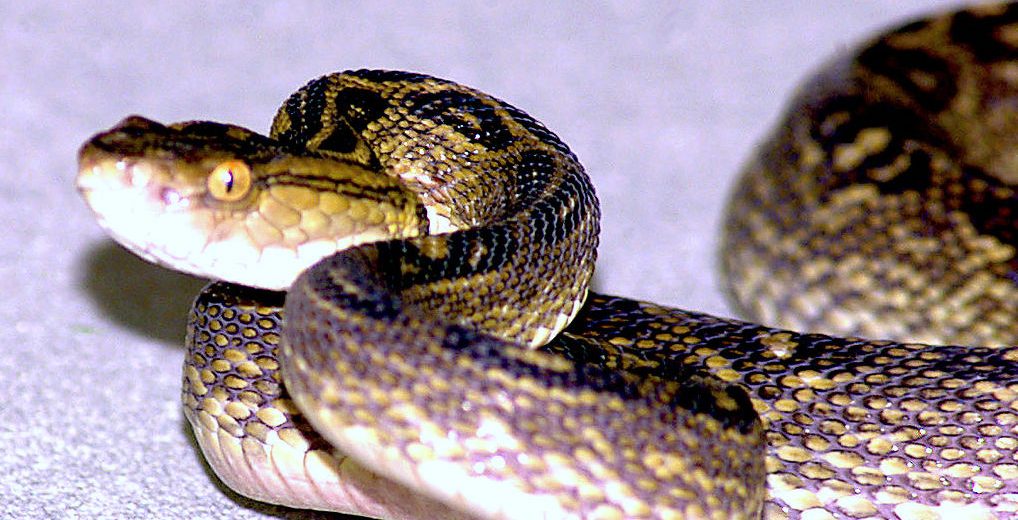
The habu snake, aka Okinawa habu, Kume Shima habu, or princess habu, hails from the Japanese Ryukyu Islands, including the islands of Okinawa Amami. They prefer coastal habitats, forests, grasslands, shrublands, cultivated fields, old tombs, caves, and urban areas. Even though they face the threats of hunting, trapping, and invasive species (and with them disease), these pit vipers are listed as Least Concern by the IUCN. However, their populations are decreasing.
First the Stats…
Scientific name: Protobothrops flavoviridis
Weight: Up to 2+ lbs.
Length: Up to 8 feet
Lifespan: Up to 15 years
Now on to the Facts!
1.) Habus are nocturnal (active at night).
2.) These snakes are terrestrial (spend their lives on the ground).
3.) The habu snake, like other snakes, is solitary. They only come together to mate.
4.) They are typically irritable, very defensive, and quick to strike.
5.) Don’t underestimate their reach. These snakes have an exceptionally wide strike zone.
But wait, there’s more on the habu snake!
6.) If medical treatment (antivenom) is administered, there is only a 1% chance of death.
7.) A group of vipers is called a bed, den, knot, nest, or pit.
Did you know…?
A bite from a habu snake can cause nausea, vomiting, hypotension, and potentially even death. Their venom is comprised of cytotoxin and haemorrhagin components.
8.) These snakes are called pit vipers due to the large openings, or pits, in the front of their head that sense heat. They help the snake locate it’s prey and narrow in on a strike.
9.) Mice, rats, snakes, frogs, and birds are all preyed on.
10.) The Asian mongoose preys on the habu snake.
But wait, there’s still more on the habu snake!
11.) Unlike other pit vipers, the habu is oviparous (lays eggs).
12.) Females lay up to 18 eggs that hatch in up to 6 weeks.
13.) The snakelets are born precocial (totally self sufficient) and fully venomous.
14.) These snakes are heavily collected for use in habushu liquor. As this liquid is thought to have medicinal properties.
Now a Short Habu Snake Video!
Be sure to share & comment below! Also, check out the Critter Science YouTube channel. Videos added regularly!
Want to suggest a critter for me to write about? Let me know here.
Think you know a lot about critters? Try your hand at these fun, free quizzes:



